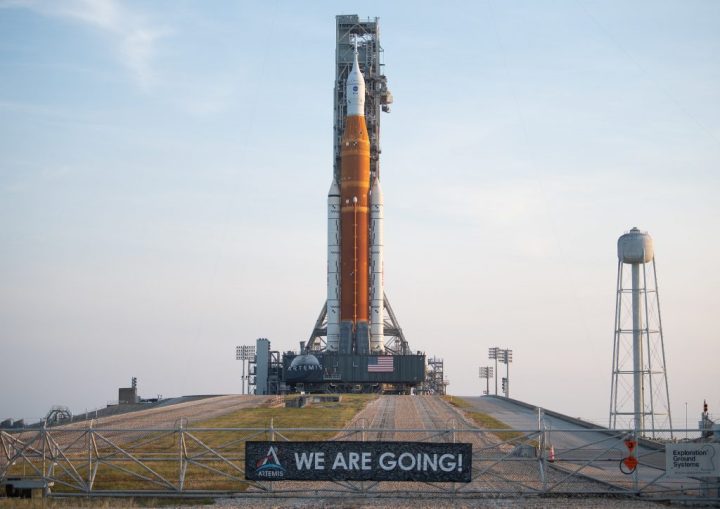NASA has begun the countdown for the launch of its brand new mega moon rocket, the Space Launch System, marking the start of the uncrewed Artemis I mission to the moon. The launch, scheduled for Monday, August 29, will see the rocket carry the Orion spacecraft into a 42-day test flight which includes a fly-by of the moon, ahead of future crewed moon missions.
The countdown began at 10:23 a.m. ET (7:23 a.m. PT) on August, September 27, with the rocket and launch team ready at NASA’s Kennedy Space Center in Florida. From today onward, engineers will begin powering up the rocket core stage and the spacecraft in preparation for launch on Monday morning.

The start of the countdown is an exciting step in preparing for the launch, but as always, there is the possibility that the launch might have to be scrubbed for various reasons.
“We’re not going to promise that we are going to get off on Monday,” said Mike Sarafin, Artemis mission manager, NASA Headquarters, at a NASA press conference. “We could have weather or technical issues, or we could have a range and public safety hold, or a combination of any of those. But we do feel good about our attempt on Monday in terms of our overall setup. We polled the mission management team today and we’re ready to proceed through the next decision gate, which is the tanking meeting that will happen late Saturday night.”
Regarding weather, the current outlook is generally good for Monday, though there is some offshore rain forecast which could potentially be an issue for the launch. “We do have a probability of 70% of favorable weather,” said Melody Lovin, weather officer, Space Launch Delta 45. “The weather looks pretty decent. The main concern is going to be offshore showers and possibly a few thunderstorms as well.”
If the weather does prove a problem, there are backup launch opportunities on September 2 and September 5.
If you’re interested in watching the launch live on Monday, head on over to our guide on how to watch.



